In the previous lesson, you learned a little about the limiters that appear on the left side of every tab of results. You focused on using the Subject limiter to suggest other search terms you may want to try. In this lesson, you'll learn more about using the limiters to narrow your results and make them more specific.
As you explore some of the most important limiters below, follow along by doing a search in your own ISearch for bears. The graphic below is an example.
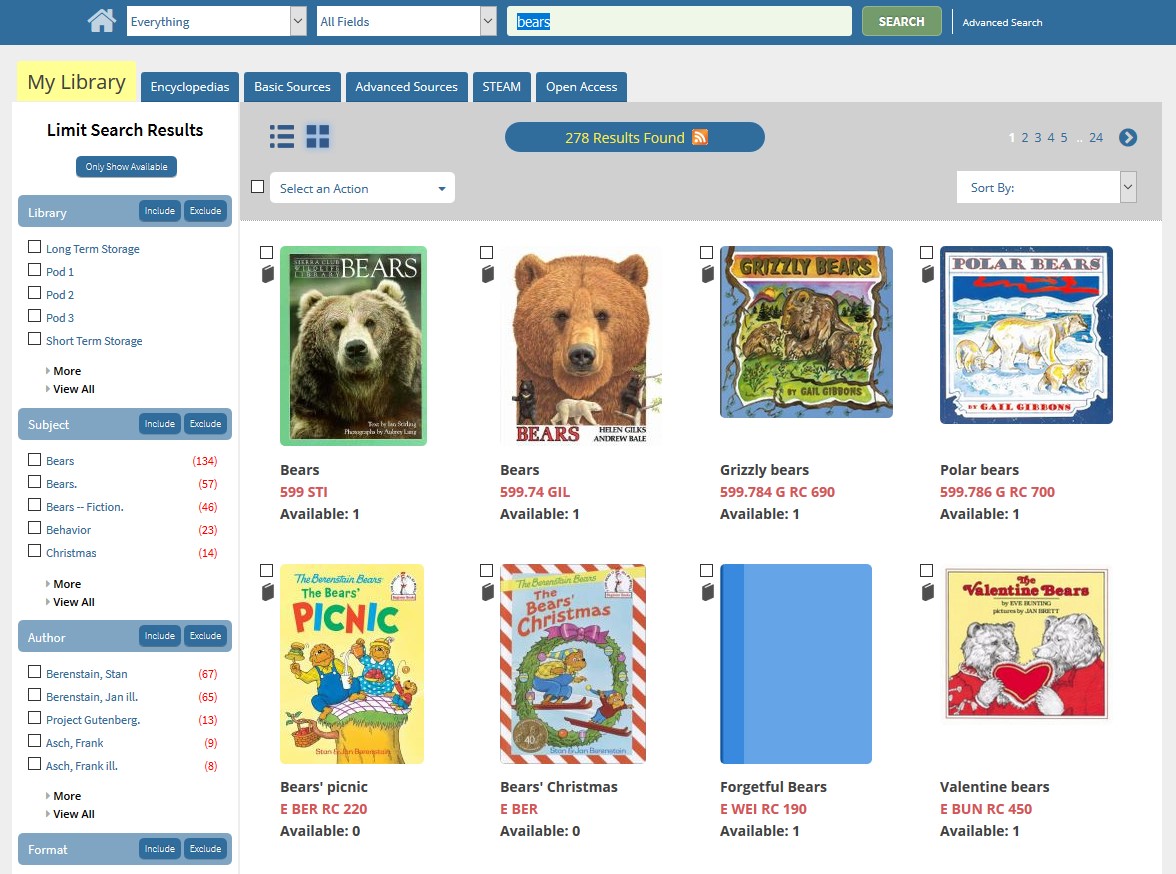
On the My Library tab, there are two ways to apply limiters:
Most of the limiters on the My Library tab are using your catalog records. Because the ISearch limiters are using your catalog records, it's important that you maintain consistent records. If you have questions about how you can clean up your catalog records, contact your INFOhio Provider at your ITC.
Library
If you are searching a district-wide version of ISearch, you can limit results to those in a specified library or location within your district. The graphic below provides an example.
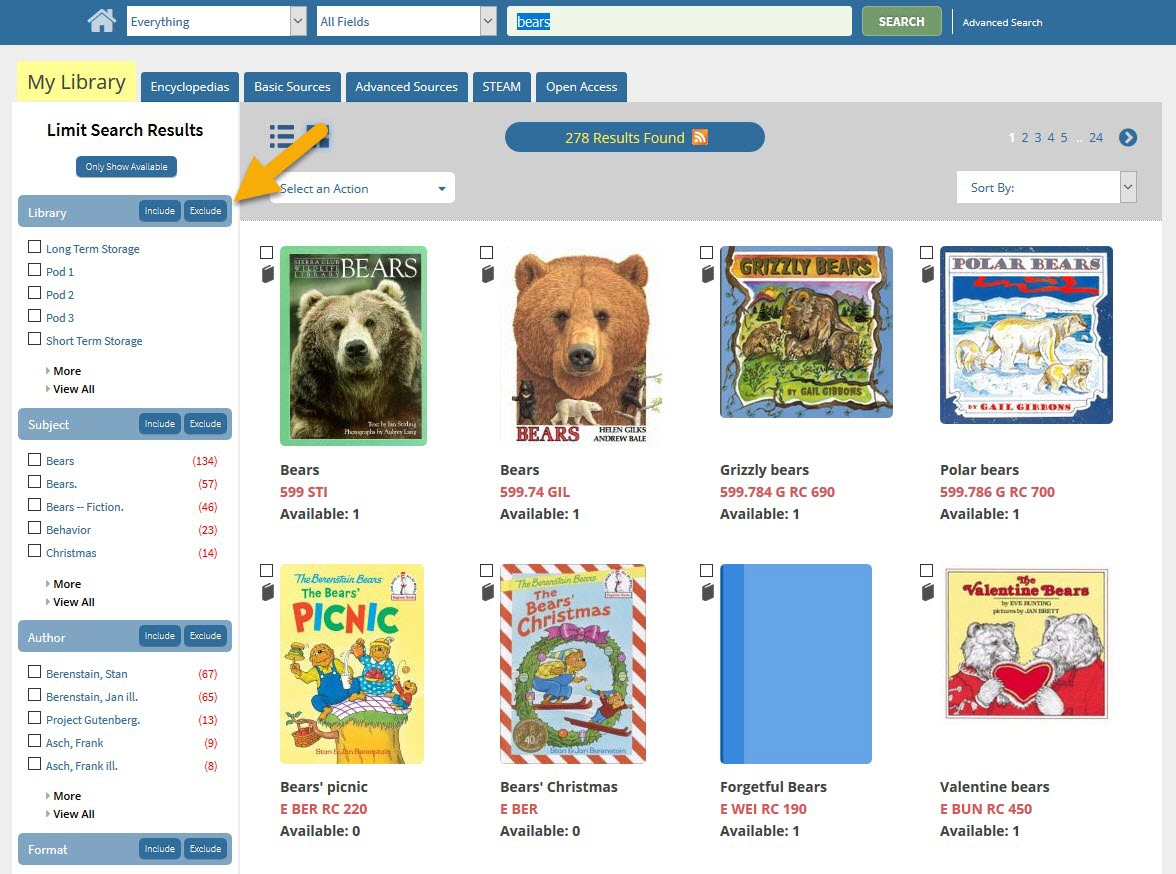
To limit to books about bears in a single library, click the limiter for that library. Note that when you have applied one or more limiters, those limiters will appear at the top of your limiter list. The graphic below is an example of what this will look like.
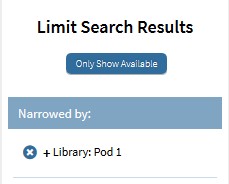
To remove that limiter, click the "x" next to that limiter and your results will resolve. In the image above, note the "x" is to the left of the library.
Subject
The Subject limiter on the My Library tab is using the Library of Congress subject headings from your catalog records.
Expand the Subject limiter by clicking the View All link. The image below is an example of all the subjects for bears.
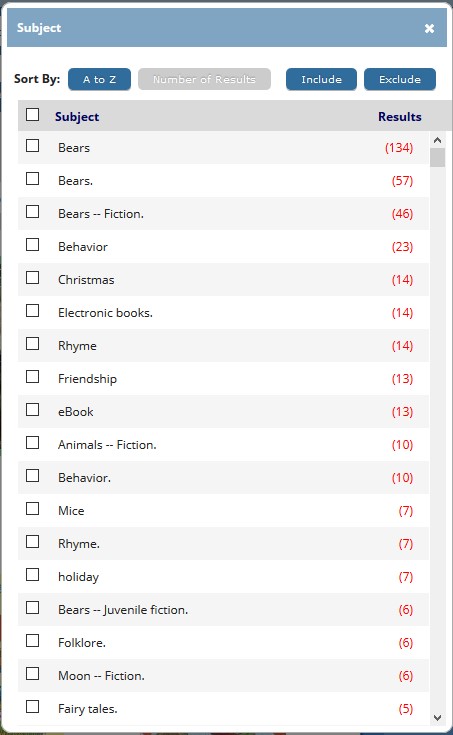
Notice that when you expand a limiter, you can no longer apply a single limiter by clicking the limiter link. Instead, you need to check the box and click the Include button. Before limiting, explore the other limiter options. The list of limiters defaults to sort by Number of Results. In this example above, 134 of the search results about bears have been tagged with the subject "Bears" so it appears at the top, while just 6 of the search results about bears have been tagged with the subject "Folklore." so it appears near the bottom of the list.
Because the ISearch limiters are using your catalog records, it's important that you maintain consistent records. In this example, note that the first subject limiter is for "Bears" and the second subject limiter is for "Bears." (with a period). That means that some of the results were cataloged with a subject of "Bears" while others were cataloged with a subject for "Bears." (with a period). This can create confusion for your patrons and makes the limiters less effective. If you have questions about how you can clean up your catalog records, contact your INFOhio Provider at your ITC.
Check the box next to the Subject limiter "Bears" and then click the Include button. In the graphic below, you can see that the limiter has been applied and is listed under "Narrowed by."
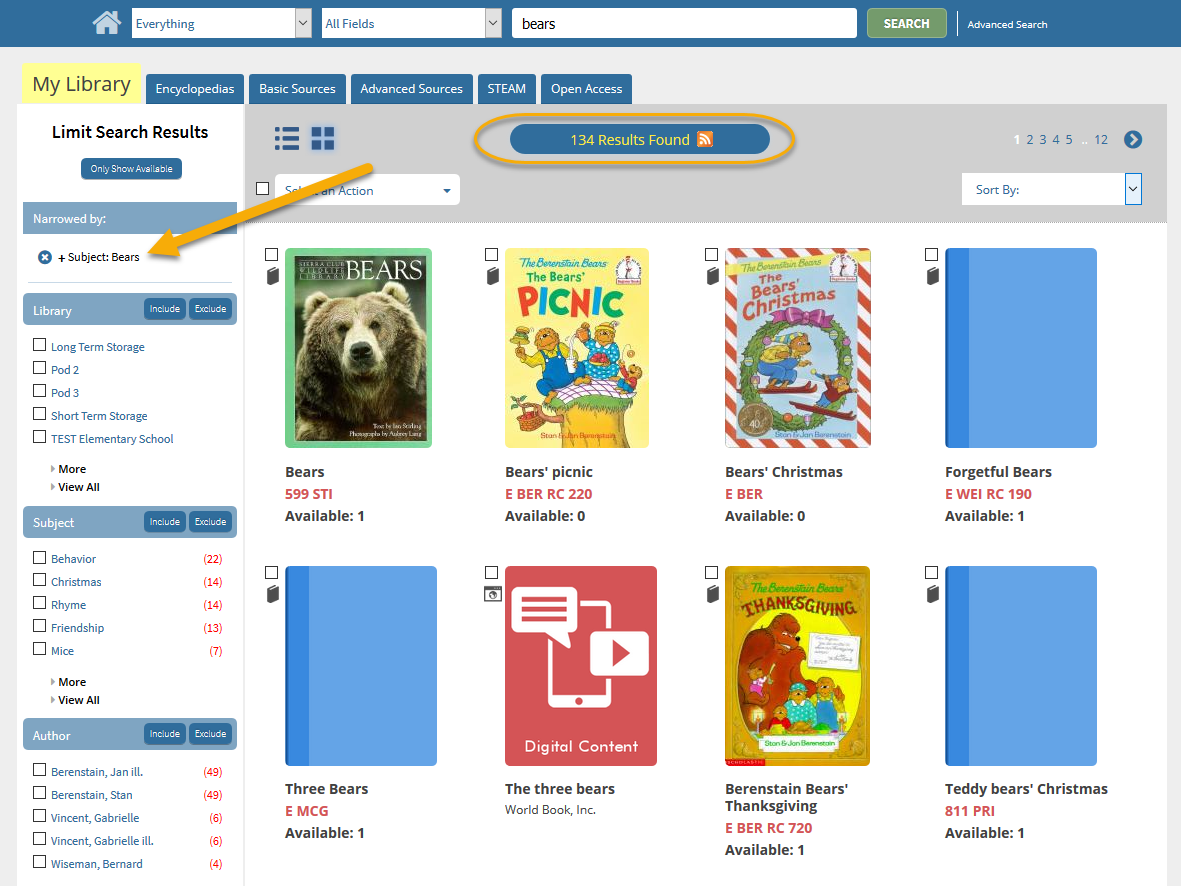
In this example below, the results have been narrowed to the items tagged with the "Bears" Subject limiter. Notice that the list of subjects in the Subject limiter category has updated as well. In this set of 134 items tagged with the subject of "Bears" there are 7 items tagged with the subject of "Mice".  Click the "Mice" Subject limiter as indicated the above image.
Click the "Mice" Subject limiter as indicated the above image.
In this example below, the results have been narrowed to the items tagged with both the "Bears" and "Mice" Subject limiters.
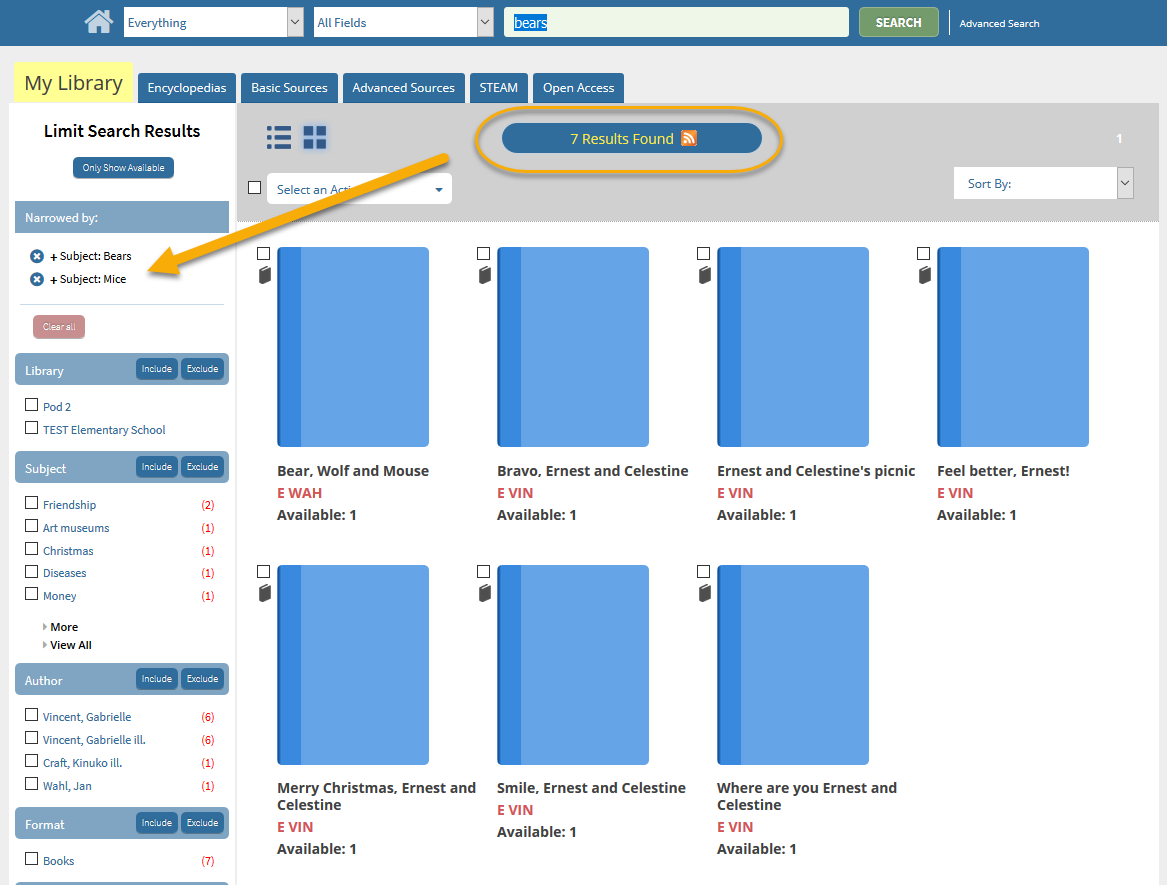
The more limiters you apply, the fewer results you'll get, but your results will be more specific.
Author
The Author limiter on the My Library tab is using the Author fields from your catalog records.
Expand the Author limiter inline by clicking the More link as indicated below.
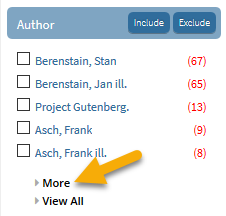
From the image below, you can apply a single limiter by clicking the link but you do not see all of the results.
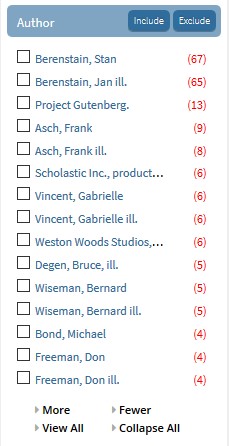
Notice in the image above that illustrators appear in the Author limiter with "ill." after their names.
A single item in your result list may be tagged with multiple limiters. Below, you can see that 67 of the search results about bears have been tagged with "Berenstain, Stan" in the author field and 65 of the search results about bears have been tagged with "Berenstain, Jan ill." in the author field. If we narrow our results by checking the boxes next to "Berenstain, Stan" and "Berenstain, Jan ill." and clicking the Include button, how many total results do you think we'll have?
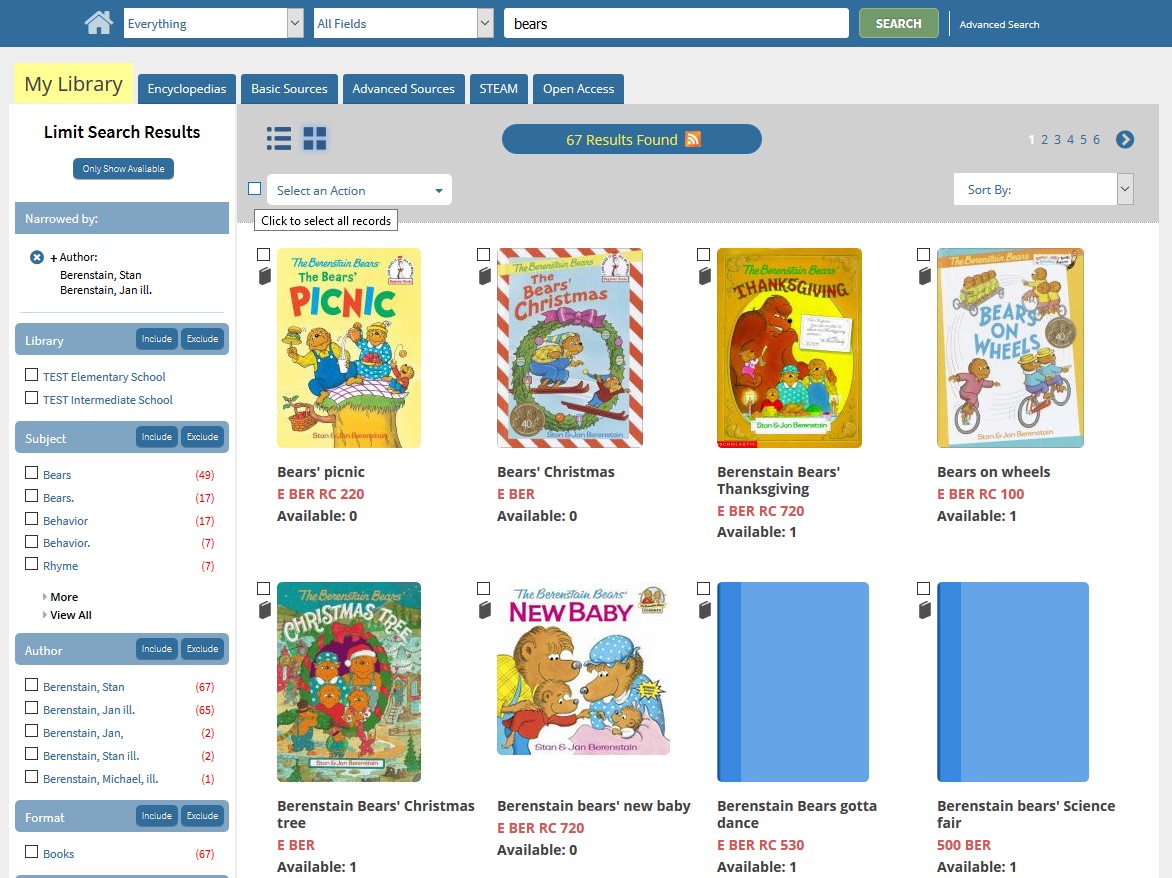
We now have 67 results which appear in the example above. This means that all 65 of the results that were tagged with "Berenstain, Jan ill." were also tagged with "Berenstain, Stan" in the author field. In this school library, Stan Berenstain was the author of all of the items that Jan Berenstain illustrated. However, for 2 of those 67 results, Stan Berenstain was tagged as the author but Jan Berenstain was not the illustrator.
Lexile
The Lexile limiter on the My Library tab is using the Lexile fields (521 tag) and sub-fields from your catalog records.
There are different ways to measure reading levels. For the Lexile limiter, ISearch includes Lexile levels and Fountas and Pinnell levels. In order for you and your patrons to be able to use the Lexile limiter, you need to have catalog records that include Lexile levels or Fountas and Pinnell levels. If you have questions about how you can add these levels to your catalog records, contact your INFOhio Provider at your ITC.
Expand the Lexile limiter by clicking the View All link. Notice that like all other limiters, the sort defaults to Number of Results. You can select the A to Z button as indicated below to sort alphabetically. This may make it easier for you to select multiple limiters within a range of results.
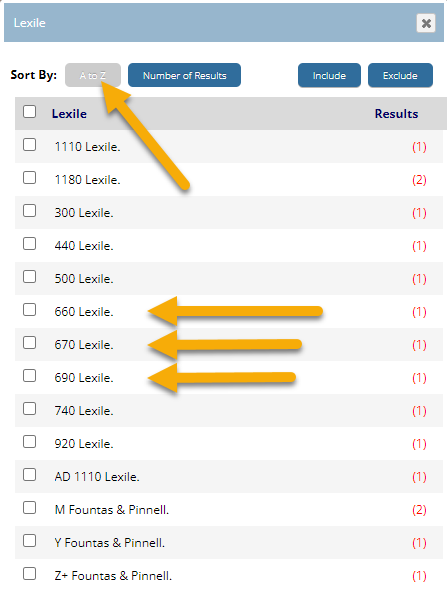
A single item in your result list may be tagged with multiple limiters. Using the image above as an example, this means that if we check the boxes next to "660 Lexile.", "670 Lexile.", and "690 Lexile." we could get 3 different items, but we might also get a single item that has been tagged with all three limiters.
Because the ISearch limiters are using your catalog records, it's important that you maintain consistent records. If you have records that have been tagged as "740 Lexile" and other records that have been tagged as "740 Lexile." (with a period), those will appear as separate limiters. This can create confusion for your patrons and makes the limiters less effective. If you have questions about how you can clean up your catalog records, contact your INFOhio Provider at your ITC.
Reading Program
The Reading Program limiter on the My Library tab is using the Reading Program fields (526 tag) and sub-fields from your catalog records.
There are different reading programs that level texts. For the Reading Program limiter, ISearch includes Accelerated Reader and Reading Counts. In order for you and your patrons to be able to use the Reading Program limiter, you need to have catalog records that include Accelerated Reader or Reading Counts information. If you have questions about how you can add this reading program information to your catalog records, contact your INFOhio Provider at your ITC.
Expand the Reading Program limiter by clicking the View All link. Notice that like all other limiters, the sort defaults to Number of Results. You can select the A to Z button shown below to sort alphabetically. This may make it easier for you to find a specific limiter.
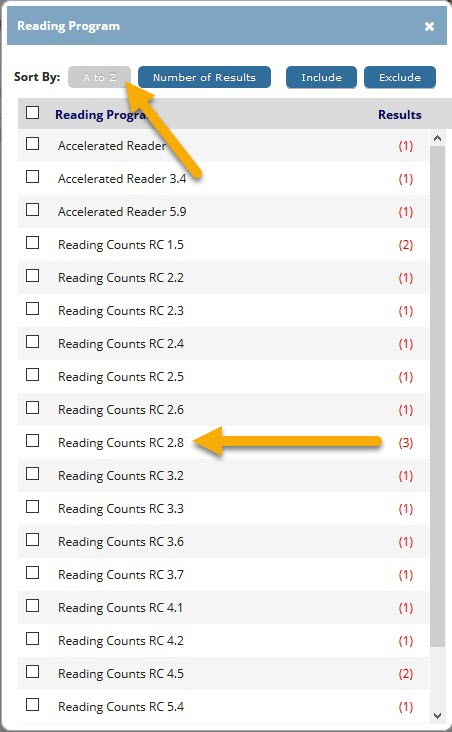
Check the box next to a limiter and click the Include button. Then explore your results. Remember that the limiter you have applied appears just above the limiter options along the left side of your screen as seen in the example below.
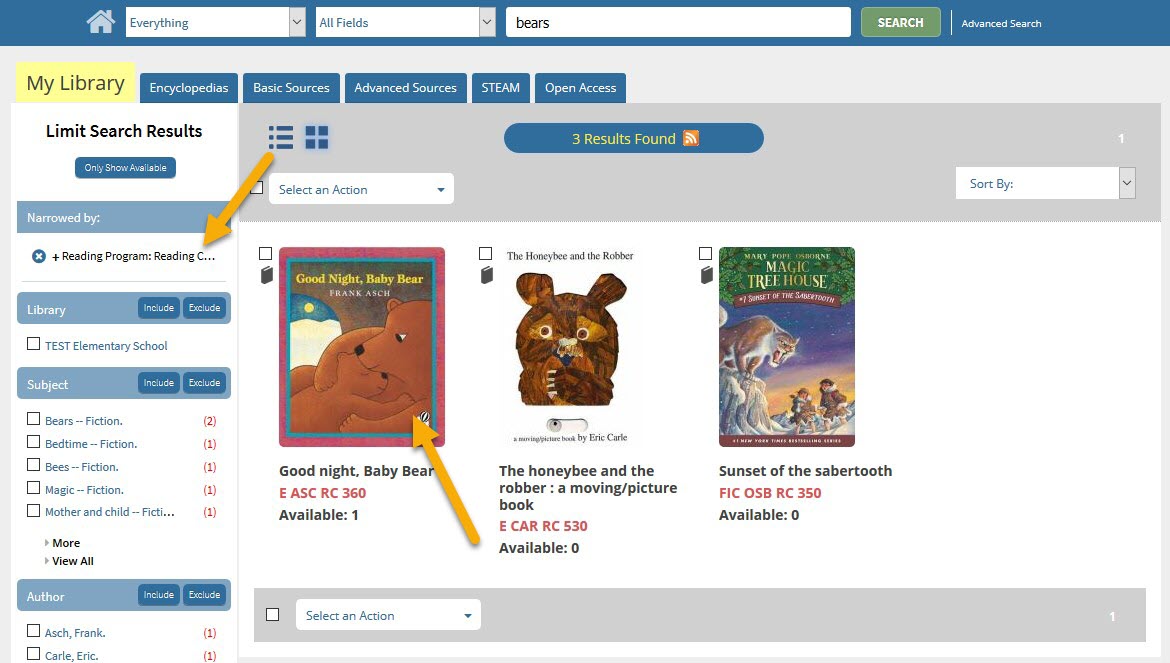
Click a book cover to find more information about that book including additional reading program information such as points or interest level. The image below is an example of what is included in the reading program information.
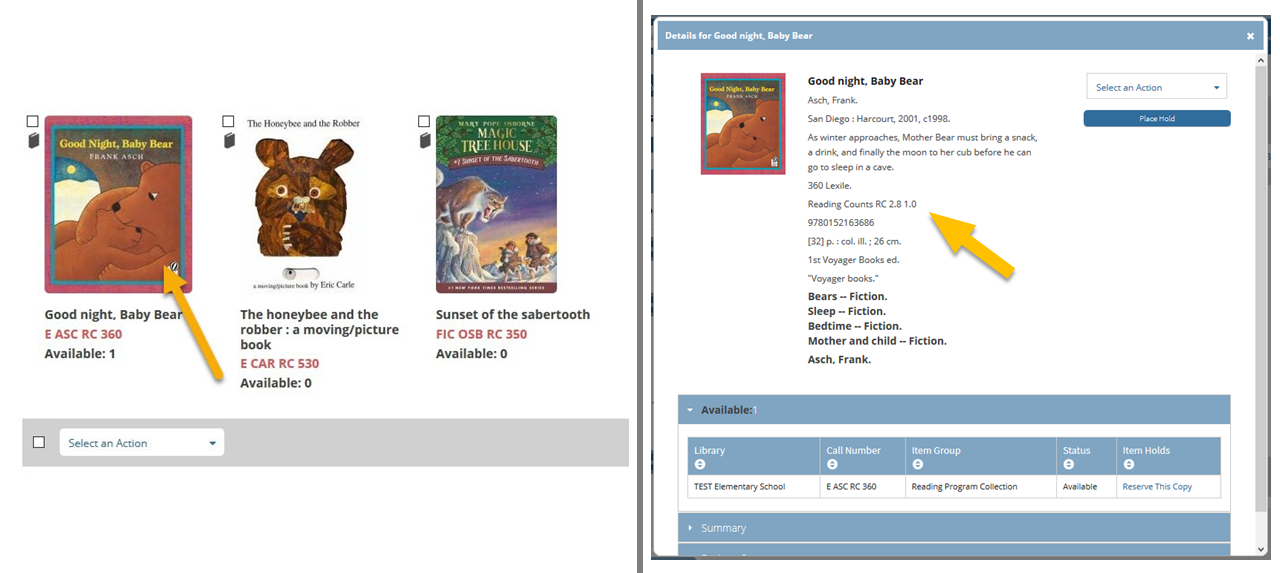
Because the ISearch limiters are using your catalog records, it's important that you maintain consistent records. If you have questions about how you can clean up your catalog records, contact your INFOhio Provider at your ITC.
The limiters are unique to each tab. In other words, applying a limiter on the My Library tab will not apply the same limiter on the Encyclopedias tab. As you visit each new tab, you will be starting fresh with the results from your search.
Unlike the limiters on the My Library tab, the limiters on the other tabs are not controlled by your catalog records. Instead, the limiters on the other tabs are using records supplied by EBSCO.
You will notice a few differences between the limiters on the My Library tab and those on the other tabs. The most significant difference is that there are no checkboxes next to limiters on other tabs. This means you can apply only one limiter at a time by clicking the link for it. However, you can apply as many limiters as you want. Additionally, most limiters on the other tabs do not have the Include and Exclude buttons that the limiters have on the My Library tab. Because you can only apply limiters (include) on these tabs, as you work through the examples below, consider how you can use the - (minus sign) in your search to exclude unwanted results.
Finally, when you click the Encyclopedias, Basic Sources, Advanced Sources, and STEAM tabs, you will notice that a Full Text limiter has been pre-applied. You can see an example of this below.

Most of the databases that you can search from these other tabs include full text content and indexing/abstracting content. At the request of our users, INFOhio has applied a default to only show the results for which the full text is available. This cuts down on students getting millions of results for items that have nothing but an abstract and a citation. If you or your patrons—your students, their parents, and your colleagues—want to see the citations and abstracts for items, even if the full text is not available, you can click the "x" to turn off that limiter.
Subject
From your original search for bears, click the Basic Sources tab. Below, you can see that the tab will change to yellow. Notice the number of results available on the Basic Sources tab.

Expand the Subject limiter by clicking the View All link. The image below is an example of all the subjects available after clicking that option.

As with the limiters on the My Library tab, the list of subject limiters defaults to sort by the number of results. When you apply a limiter, you are telling ISearch you only want to see those results from your search which also have your limiter as a subject.
Notice how many results are focused on Chicago's football team. Remember, if you want to exclude those kinds of results, you could try another search for bears -"chicago bears". However, another way to narrow your results to be more focused on your topic is to select a subject limiter.
Click the Subject limiter link for bears as indicated below.

Then skim your narrowed results list. Your results should be more specific and you probably won't see any results for items about Chicago's football team.
Publication
Now expand the Publication limiter by clicking the View All link. The subjects will appear as in the example below.

In this example, of the 682 results that have been tagged with the subject "Bears", 40 of the items are from National Geographic Kids, 32 are from Ranger Rick, and 30 are from Highlights. ISearch gives you and your patrons easy access to high-quality publications. You can click a Publication limiter to narrow your results to items from a single publication.
Although this lesson is focused on using the limiters, this is an advanced search strategy shown below that can be useful if you are looking for any items from a specific publication:
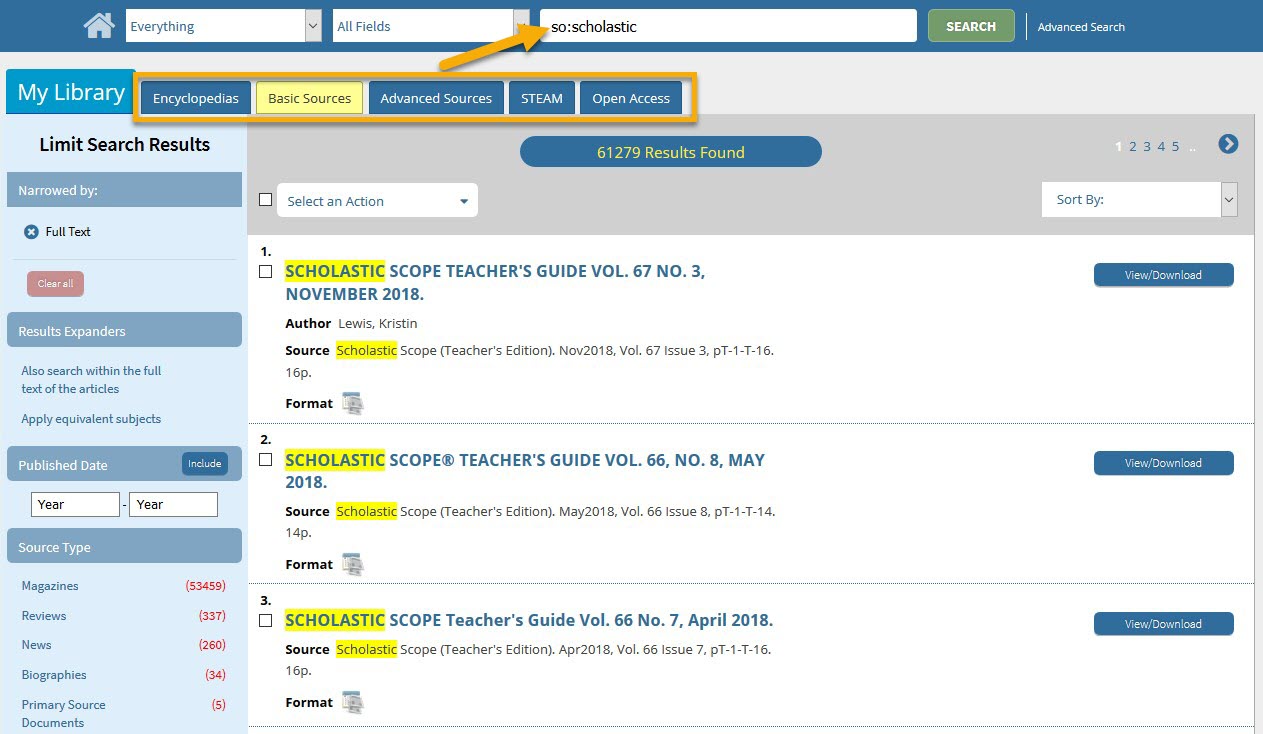
In the example above, to find items in Scholastic publications like Junior Scholastic, Scholastic Math, Scholastic Scope, and more, try a search for so:scholastic. Click the tabs and explore the results for each to see where different Scholastic publications are searched. If you want to find items from Ranger Rick, try a search for so:"ranger rick". Click the tabs and explore the results to see where Ranger Rick is available. This advanced search strategy only works well on the Encyclopedias, Basic Sources, Advanced Sources, STEAM, and Open Access tabs.
Source Type
From your original search for bears, click the Advanced Sources tab. Notice the number of results available on the Advanced Sources tab. Also notice below that although you applied a Subject limiter for "bears" on the Basic Sources tab, the only limiter that is applied on the Advanced Sources tab is the Full Text limiter that INFOhio has pre-applied to the Encyclopedias, Basic Sources, Advanced Sources, and STEAM tabs.

Expand the Source Type limiter by clicking the View All link.
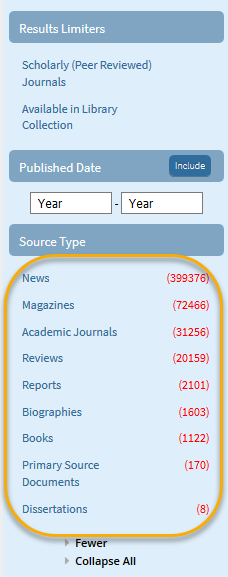
In the example below, notice the variety of source types that are available. This limiter can be useful if students are required to use different types of sources for a report or research project. Now, look at the area above the Published Date limiter.
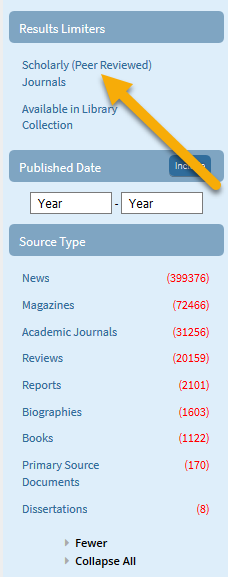
Find the "Scholarly (Peer Reviewed) Journals" link as shown above. Most items in peer reviewed journals must be reviewed by experts in the field before they are accepted for publication. Some rigorous research assignments require students to use at least one source from a peer reviewed journal. You can click the "Scholarly (Peer Reviewed) Journals" link to limit your results to items published in peer reviewed journals.
Answer the following questions in the ISearch Users Open Space group Discussions. Find the Getting the Results You Want reflection question in the Discussions tab. Reply to the thread and review other participants' responses.
Fetch is avaiable to INFOhio automated schools. If you are an INFOhio school, please log in with your school username/password using the button at the top-left corner of this page.
For more information about Fetch, please visit the Fetch information page or contact INFOhio support at https://support.infohio.org.